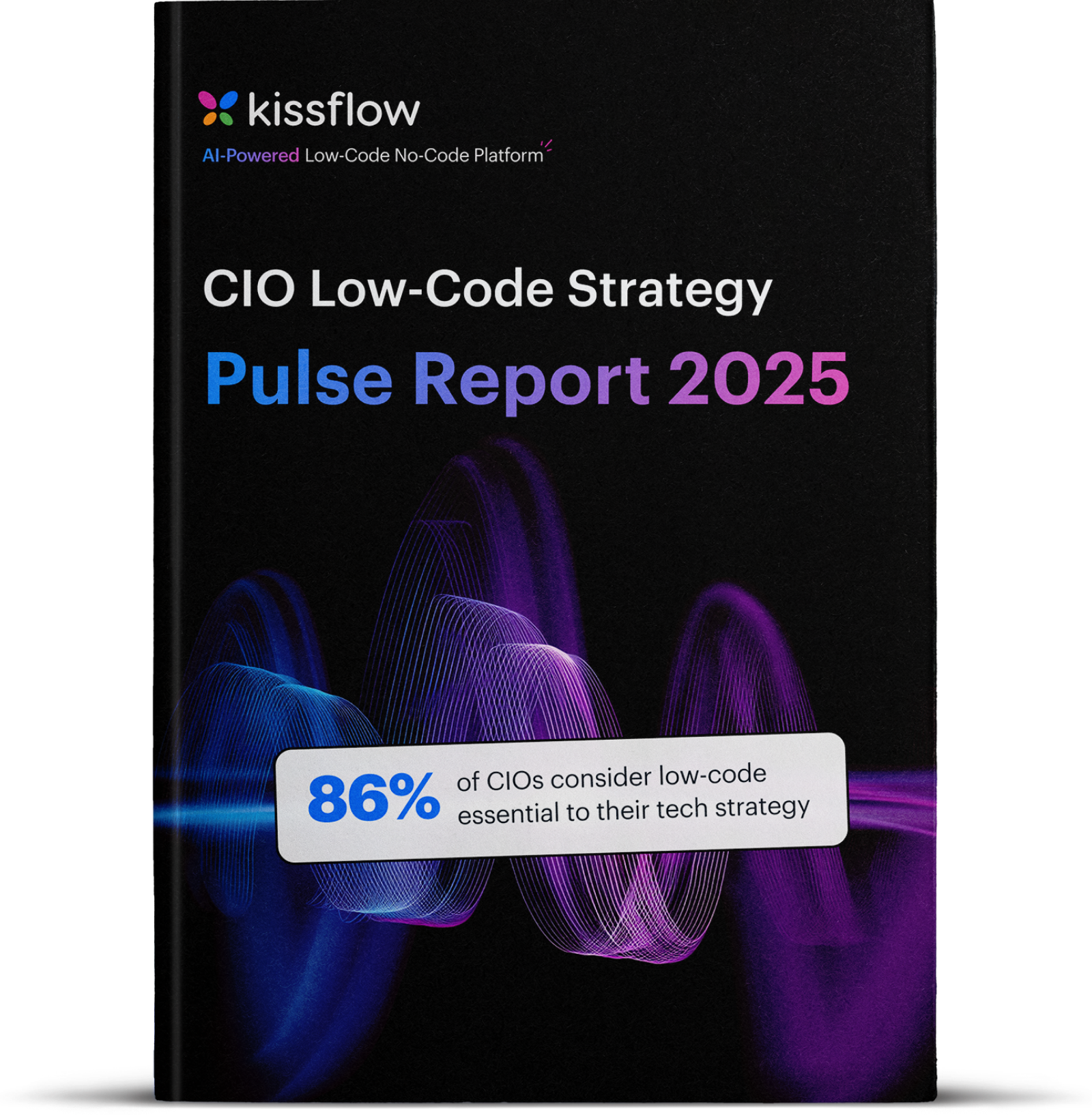
Powering Environmental Risk Assessments in Oil Exploration With No-Code Applications
Picture this: Your field team discovers a potential spill at 3 AM in a remote drilling site. By the time they fill out paperwork, email headquarters, and wait for approval chains, what could've been a minor incident becomes a major environmental headache. Sound familiar?
If you're a CIO or CTO in oil and gas, you know this dance all too well. Your teams are drowning in spreadsheets, email chains, and paper forms while regulators demand faster responses and stakeholders expect crystal-clear ESG reporting. The old ways of handling environmental risk assessment just don't cut it anymore.
Here's what you'll discover in this article: how environmental risk assessment automation can transform your operations from reactive scrambling to proactive management. We'll walk through real-world scenarios where no-code applications turn chaos into clarity, and show you exactly how modern workflow automation makes HSSE management feel less like wrestling an octopus.
By the end, you'll understand why some of the smartest oil companies are ditching their clunky systems for streamlined environmental risk assessment automation that delivers real ESG compliance results.
Why ESG and HSSE compliance need workflow automation
The pressure's mounting from every direction. Investors want transparent ESG reporting. Regulators are tightening the screws on environmental compliance. Communities are watching every move your rigs make.
Yet here's the kicker: most oil companies are still running environmental risk assessment automation like it's 1995, relying on manual incident logging instead of smart no-code platform.
Think about your current process. When an incident happens, field workers grab a clipboard (if they're lucky) or scribble notes on whatever's handy. They snap photos with personal phones, then spend hours typing everything into spreadsheets back at base camp. The data bounces between email inboxes like a ping-pong ball while managers try to piece together what actually happened.
This old-school approach creates some serious headaches:
Real-time visibility goes out the window: By the time leadership knows about an incident, it's already snowballed into something bigger. You're playing catch-up instead of getting ahead of problems.
Information gets lost in translation: Ever played telephone as a kid? That's your current incident reporting process. Details change, context disappears, and crucial information falls through the cracks.
Human error runs wild: When people are manually entering data across multiple systems, mistakes happen. A mistyped coordinate or forgotten follow-up can turn a small issue into a compliance nightmare.
Audit dashboards become archaeology projects: When auditors come knocking, your team scrambles to reconstruct what happened, when, and who did what. Good luck proving ESG compliance when your "paper trail" is actually scattered across emails, file cabinets, and someone's personal notebook.
The math is simple: traditional tools can't keep pace with modern HSSE management expectations. While your competitors streamline their operations with environmental risk assessment automation, sticking to spreadsheets and email chains puts you at a serious disadvantage.
Build a Proactive HSE Management System
Critical use cases for automation in risk and impact workflows
Let's get practical. Here are the game-changing scenarios where workflow automation transforms environmental risk management from a headache into a competitive advantage.
Incident logging that actually works
Imagine Sarah, your lead safety officer, walking a drilling site at dawn. She spots equipment leaking hydraulic fluid near a water source. Instead of hunting for paperwork, she pulls out her tablet and opens a custom form built on your no-code platform.
She taps "Environmental Incident," and the app automatically captures her GPS coordinates. She snaps photos of the leak, selects the equipment type from a dropdown menu, and estimates the spill volume using pre-configured ranges. The severity level auto-populates based on proximity to water sources, and the form routes immediately to the right response team.
Total time: three minutes. Compare that to the old process of finding forms, filling them out by hand, driving back to base camp, and scanning everything into the system.
The magic happens in real-time incident logging: GPS coordinates are precise, not guessed. Photos provide immediate context instead of relying on someone's description hours later. Standardized fields mean every incident gets logged consistently, making pattern analysis actually possible.
Impact assessment that moves at the speed of business
Here's where things get interesting with impact assessment. The moment Sarah hits "submit" on that incident report, automated mitigation workflows spring into action based on the type and severity she selected.
For her hydraulic leak, the system immediately pings the environmental impact assessment team. It cross-references the GPS coordinates with sensitive area maps, checks weather data for wind patterns, and calculates potential contamination zones. The environmental team gets a complete picture before they even leave the office.
Meanwhile, the system alerts the local regulatory contact if required, schedules follow-up inspections based on company policies, and creates placeholder tasks for cleanup crews. All this happens automatically, without anyone manually routing emails or making phone calls.
Smart routing eliminates bottlenecks: Instead of incidents sitting in someone's inbox, they immediately reach the right experts. Response times drop from hours to minutes.
Mitigation workflows that keep everyone accountable
Once the environmental team completes their impact assessment, they need to coordinate cleanup and prevention measures through structured mitigation workflows. This is where most companies hit another wall - assigning tasks, tracking progress, and ensuring nothing falls through the cracks.
Your no-code platform automatically creates mitigation tasks based on the incident type. Cleanup crew gets a task with photos, GPS coordinates, and specific requirements. The procurement team gets a task to order replacement seals. Maintenance gets a task to inspect similar equipment across all sites.
Each task comes with deadlines, responsible parties, and escalation rules. If cleanup doesn't get marked complete within four hours, it automatically escalates to site management. If equipment inspection tasks sit unfinished, they bubble up to operations leadership.
Visual audit dashboards keep everyone honest: Managers can see at a glance which sites have open incidents, which tasks are overdue, and where resources are needed most. No more wondering if that spill from last week actually got cleaned up.
Building tailored workflows with no-code platforms
Here's where citizen development becomes your secret weapon for environmental risk assessment automation. Your HSSE management officers understand environmental risks better than any outside consultant or IT teams. They know exactly what information matters, which approvals are needed, and how work actually flows on the ground.
With Kissflow's no-code applications, these domain experts can build the exact digital forms and workflows your operations need through citizen development. No waiting six months for IT to prioritize your project. No expensive consultants trying to understand your business.
Your field teams can create site-specific forms that capture local requirements - maybe one site needs extra wildlife impact questions, while another focuses on groundwater protection. They can embed dropdown menus that reflect actual equipment types, photo upload requirements that match regulatory needs, and GPS capture that feeds directly into your mapping systems.
Version control keeps everyone current: When regulations change or you learn better ways to capture data, updates roll out instantly across all sites. No more outdated forms floating around, no more "we're still using the old process" excuses.
Optimize Upstream Operations with Intelligent Automation
Dashboards for audit, reporting, and compliance traceability
Now we get to the payoff - turning all this structured data into audit dashboards that actually matter for ESG compliance.
Your automated environmental risk system creates visual audit dashboards that tell the story of your environmental performance. Risk scores by site show you which locations need extra attention. Incident logging response times reveal whether your teams are getting faster or slower. Task completion rates highlight bottlenecks in your mitigation processes.
Real numbers replace gut feelings: Instead of guessing which sites are your biggest environmental risks, you can see exactly where incidents cluster. Instead of hoping your response times are improving, you have concrete data showing month-over-month trends.
When audit season arrives, you're ready with comprehensive audit dashboards. Every incident has a complete digital trail showing what happened, who responded, what actions were taken, and how long everything took. Export structured reports that map directly to ESG compliance disclosure requirements or regulatory submission formats.
The immutable workflow trails within your no-code platform become your compliance insurance policy. Auditors can trace every decision, every approval, and every task completion. There's no "we think this happened" or "someone probably handled that." You have definitive proof of your environmental stewardship.
- Rich McAvey and Simon Cushing
Aligning citizen development with enterprise governance
Here's the concern every CTO raises: "If we let business users build their own applications, won't we lose control?"
Smart no-code applications like Kissflow platform solve this with governance-first architecture. Your HSSE management teams get the agility to create what they need through citizen development, while IT maintains oversight where it matters most.
Data policies stay in IT's hands: You set retention schedules, backup procedures, and access controls. Business users can't accidentally expose sensitive information or violate data governance requirements.
Integration remains centralized: Your environmental data needs to feed into enterprise reporting systems, regulatory databases, and third-party analytics tools. IT maintains these connections while business users focus on collecting better data.
Escalation paths stay clear: Critical incidents or unresolved risks can automatically trigger enterprise-level alerts, ensuring nothing important gets buried in departmental workflows.
This balanced approach gives you the best of both worlds through workflow automation. Business users move fast and solve real problems, while enterprise controls prevent chaos and ensure ESG compliance.
Metrics: No-Code Applications in Oil Exploration Risk Assessment
|
Metric/Impact |
Statistic/Insight |
|
No-code AI platform market size |
$3.83 billion (2023), 30.6 percent CAGR (2024–2030) |
|
Predictive maintenance impact |
20–40 percent reduction in downtime |
|
Workflow automation benefits |
Streamlined compliance, reduced errors, and real-time tracking |
|
EHS software adoption |
Enables site-level audits, automated alerts, and risk grading |
|
Empowerment of non-technical teams |
Custom app development without coding expertise |
The bottom line
Environmental risk assessment automation with Kissflow isn't just about better forms or faster approvals. It's about transforming your oil exploration operations from reactive firefighting to proactive risk management.
When your teams can log incidents in real-time, route them intelligently, and track mitigation efforts automatically, you're not just checking compliance boxes. With well operation digitization, you're building a culture where environmental responsibility becomes part of daily operations, not an afterthought.
The companies winning in today's environment - both business and regulatory - are the ones making this digital transformation happen now. They're using no-code applications to give their field experts the tools they need while maintaining the enterprise controls their CIOs demand.
If you're ready to stop wrestling with spreadsheets and start building environmental risk workflows that actually work, it's worth exploring what modern no-code platforms can do for your specific operations. The technology is ready. The question is whether you'll use it to stay ahead of the curve or play catch-up with competitors who already have. Visit Kissflow's oil and gas solutions. You’ll see how low-code isn’t just another tool. It’s a smarter way to run your field.
Try Kissflow for Environmental Risk Automation
Related Topics:
Related Articles











